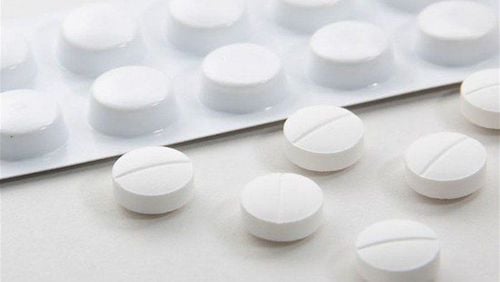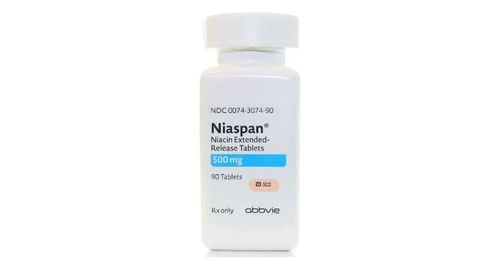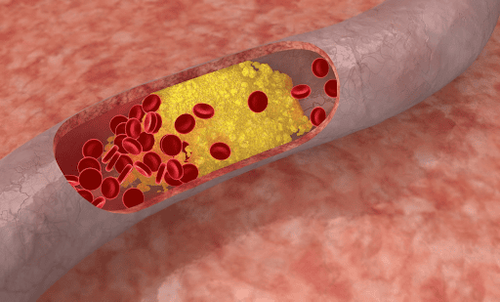This is an automatically translated article.
Posted by Dr. Dao Thi Mai Lan - Medical Specialist - Gene Technology - Vinmec Institute of Stem Cell and Gene Technology
Hyperlipidemia is now becoming common in the community and tends to progress to many cardiovascular diseases, but most of the patients are not properly diagnosed and treated. When in the family there are grandparents, parents, brothers / sisters, close relatives with blood fat, you are also at risk of having high blood fat. Familial hypercholesterolemia (FH-Familial hypercholesterolemia) is an inherited disease when the family carries a genetic mutation that disrupts fat metabolism, causing high cholesterol in the blood. Advances in genetic testing are now helping us to better understand the disease, many inherited genetic variations have been identified as the cause of the disease.
1. Familial dyslipidemia and hyperlipidemia
Cholesterol is a form of fat produced by the liver and plays a role in the formation of cell membranes, hormones, and vitamin D. Cholesterol is insoluble in water, so it travels through the blood through lipoprotein particles called LDL and HDL. Low-density lipoprotein (LDL) is responsible for transporting cholesterol to the walls of blood vessels. If the amount of LDL cholesterol is high, they will accumulate in the walls of blood vessels, creating knots that narrow the walls of the blood vessels, obstructing blood flow, increasing the risk of blood vessel blockages causing strokes and heart attacks. HDL (high-density lipoprotein) helps transfer LDL cholesterol to the liver and remove it from the body, thus helping to prevent the formation of blood clots, reducing the risk of cardiovascular diseases and strokes.Triglycerides are a different form of fat than cholesterol. When the body uses cholesterol to build cell membranes and hormones, triglycerides are used as an energy source. In case the body takes in more calories than it needs to use, the excess calories will be converted into triglycerides and stored in adipose tissue. If the body regularly takes in more calories than it needs to, the level of triglycerides will also increase. Therefore, they also increase the risk of heart disease and stroke.
People have hyperlipidemia when their LDL cholesterol or total cholesterol (the sum of LDL cholesterol, HDL cholesterol and 20% of triglycerides) is higher than normal. The cause of blood fat is usually due to an unhealthy lifestyle and diet.
If your family has grandparents, parents, brothers / sisters, close relatives with high cholesterol, there is a high chance that there is a gene in the family and you may have familial hyperlipidemia. People with familial hyperlipidemia often find it difficult to control cholesterol by lifestyle changes alone, but must be combined with medication. People with familial hyperlipidemia often have very high cholesterol levels, have heart disease at a young age, and have a higher risk of cardiovascular disease than people with normal cholesterol.

2. Signs to recognize familial hyperlipidemia
People with hyperlipidemia often have no specific symptoms, sometimes the disease has worsened before symptoms appear. Therefore, regular check of cholesterol and LDL levels in the blood is recommended even for healthy people when there is a family history of cholesterol. Some of the symptoms include:
Chest pain during intense activity Jaundice caused by fatty deposits in the tendons, elbows, buttocks and knees Cholesterol accumulates around the eyelids forming a jaundice of the eyelids. A gray-white ring appears around the cornea People with familial hyperlipidemia if not detected and treated, over time cholesterol will accumulate in blood vessels, causing atherosclerosis and many other serious complications such as stroke, heart attack, angina, high blood pressure, chronic kidney disease, kidney stones...
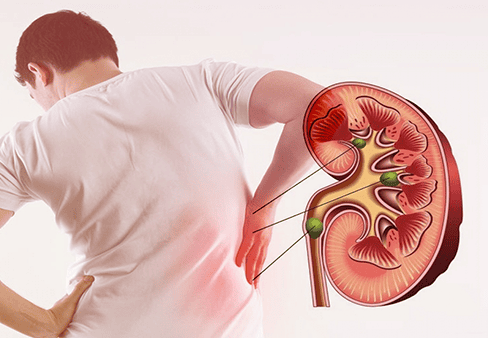
3. Who is at risk of familial hyperlipidemia?
Familial dyslipidemia is common in some races such as French-Canadian, Finnish, Lebanese, Dutch. However, anyone with a family history of cholesterol is also at risk.
4. How is familial dyslipidemia diagnosed?
Dyslipidemia is diagnosed through the following test methods:
Physical health check : The doctor examines the physical health to help determine fat accumulation in different parts of the body. At the same time take the medical history of the family.
Blood test: Check the cholesterol level in the blood, including total cholesterol, HDL and LDL. There are 3 main sets of criteria to diagnose blood lipids: Simon Broome criteria, Dutch Lipid Clinic Network criteria and MEDPED criteria.
According to the Simon Broome criteria, the diagnosis of hyperlipidemia is defined as when total cholesterol is higher than 260 mg/dL in children under 16 years of age and 290 mg/dL in adults, or LDL cholesterol is higher than 155 mg/dL in children and 190 mg /dL in adults. According to Dutch Lipid Clinic Network criteria: Elevated cholesterol levels are determined when LDL is higher than 155 mg/dL MEDPED criteria: MEDPED sets a threshold for cholesterol levels based on age and family history. Blood test results also include triglycerides, and triglyceride levels in healthy people are usually less than 150 mg/dL. Family history and other tests: If a family member has high cholesterol or heart disease, other family members are also at risk. Other lipid metabolism disorders, such as increased lipoproteins, sitosterolaemia, protein metabolism disorders in the blood, deficiency of lysosomal acid lipase... can be considered as a group of patients with suspected familial hyperlipidemia. Other tests include testing for specific types of cholesterol and fats, and testing for genetics related to blood fats. Identifying the mutated gene helps to treat patients early, reduce the risk of dying from cardiovascular diseases at a young age, and identify the risk of other family members.
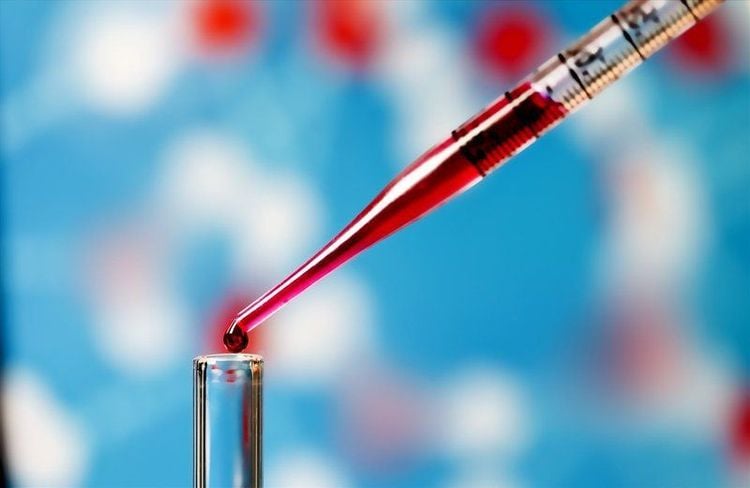
5. Inheritance of family blood lipids
Familial dyslipidemia is a disease with complex genetic causes. Currently, mutations in APOB, LDLR, LDLRAP1, PCSK9 genes have been identified as the cause of familial hyperlipidemia, in which mutations in the LDLR gene are the most common. The LDLR gene is involved in the regulation of low-density lipoprotein (LDL) receptor synthesis. Some mutations in the LDLR gene decrease the production of receptors for LDL on cell membranes while some mutations in the LDLR gene impair the ability of the blood to remove LDL from the blood. As a result, carriers of the LDLR gene mutation have high blood cholesterol levels. High blood cholesterol, in addition to accumulating in the walls of blood vessels, also accumulates in tissues such as the skin, tendons, and eyelids, forming yellow tumors.
Mutations in APOB, LDLRAP1 and PCSK9 genes are less common. Protein products from these genes play an important role in the functioning of the LDL receptor, so mutations in these genes alter the function of the receptor, reducing its ability to remove LDL from the blood. In addition, familial lipid-related genes are being studied in some cases without detecting mutations in the above 4 genes.
Mutations in the LDLR, APOB, and PCSK9 genes are autosomal dominant. This means that the patient only needs to have 1 copy of the mutation from one parent to have symptoms. Mutations in the LDLRAP1 gene are autosomal recessive. This means that a person needs to have 2 copies of the mutated gene from both parents in order to have the disease. Therefore, the parents of these people may carry the gene mutation, but the cholesterol level in the blood may still be normal.
Positive genetic test results can be clinically useful, but not necessarily diagnostic, genetic testing helps with lifestyle prevention and drug interventions to delay the onset of cardiovascular disease .
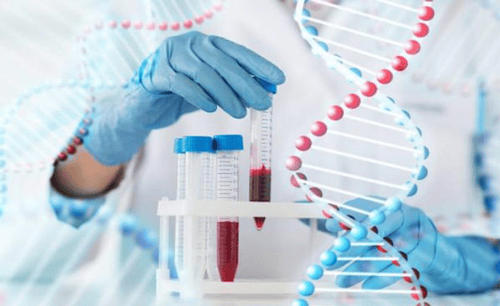
6. When should you go for a blood fat test?
If you are at low risk, you should have your blood lipids checked at age 40 in women and 35 years old in men. Check every 5 years. If you are at high risk for cholesterol and cardiovascular disease, you should have your blood cholesterol checked at age 20 and have it checked every year. If you are at risk for familial hyperlipidemia, you should have a genetic test that runs in your family.
7. How to cure blood fat?
Familial hyperlipidemia can be treated by changing the diet and combining medication to control blood lipids. Regular exercise, sports, smoking cessation are important factors in the treatment process.
A healthy diet to help reduce blood fat includes:
Increase protein intake from white meat (fish, chicken), tofu Reduce amount of red meat (beef, pork) Use vegetable oil instead of animal oil Animals, avocados Switch to a low-fat diet Increase the portion of vegetables, fruits, nuts in your meals Cut down on carbonated drinks and soft drinks Cut down on alcohol and tobacco Get regular exercise 150 minutes per day week, do exercises to gain muscle, lose fat

Use the drug as follows: According to current guidelines, familial dyslipidemia should be treated with lifestyle changes and a combination of medication, and can be started as early as 8-10 years old. Statins are commonly used drugs that help lower blood fats by preventing the liver from producing cholesterol. Statin drugs include: simvastatin (Zocor), lovastatin (Mevacor, Altoprev), atorvastatin (Lipitor), fluvastatin (Lescol), rosuvastatin (Crestor). Other medications that may be prescribed include: niacin, colesevalam (Welchol), colestipol (Colestid), or cholestyramine (Prevalite), cholesterol absorption inhibitors such as ezetimibe (Zetia). Some combination drugs reduce the amount of cholesterol absorbed by the body and the amount of cholesterol produced by the liver, such as simvastatin (Vytorin).
Hyperlipidemia is now becoming common and can leave many dangerous complications, including cardiovascular disease. If diagnosed and treated early, dyslipidemia can bring a good prognosis, minimize recurrence complications.
Periodic health check-ups help detect blood lipids early, so that you can have a treatment plan for optimal results. Currently, Vinmec International General Hospital has general health checkup packages suitable for each age, gender and individual needs of customers with a reasonable price policy, including:
Health checkup package general Vip Standard general health checkup package Patient's examination results will be returned to your home. After receiving the results of the general health examination, if you detect family blood lipid diseases, you can use services from other specialties such as testing, imaging, .. right at the hospital. hospital with outstanding quality of treatment and customer service.
Please dial HOTLINE for more information or register for an appointment HERE. Download MyVinmec app to make appointments faster and to manage your bookings easily.
MORE:
What is blood fat? Blood lipid composition How much blood fat is normal, how much is high? Treatment of high blood fat: What you need to know






